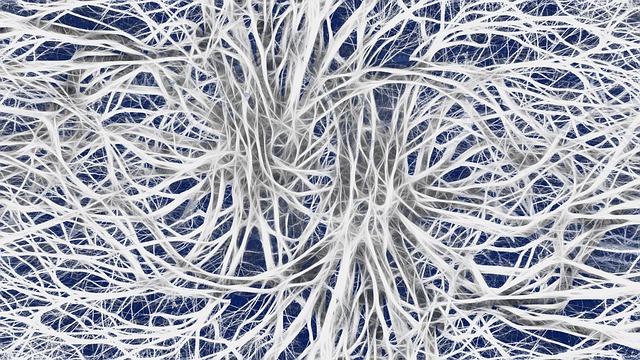Non-invasive imaging techniques, particularly spinal cord MRI, have revolutionized nerve diagnostics by providing safe and detailed insights into the central nervous system without invasive procedures. Using magnetic fields and radio waves, this technology generates high-resolution images of the spine, nerves, and surrounding structures, enabling accurate diagnosis of conditions affecting the nervous system. Spinal cord MRI can detect abnormalities like lesions, inflammations, and compressions that might be missed by other methods, enhancing diagnosis and treatment planning while ensuring patient safety. This technique is crucial for diagnosing herniated discs, demyelination, and scar tissue formation, making it a safe option for routine screening and early detection of nerve pathologies.
In today’s medical landscape, safe and non-invasive nerve diagnostics are paramount for accurate diagnosis and treatment planning. This article explores cutting-edge techniques, with a particular focus on the role of spinal cord MRI, in uncovering nerve-related issues without risking patient safety. We delve into advanced imaging technologies, highlighting their benefits, limitations, and future prospects, providing a comprehensive guide to these game-changing methods for healthcare professionals.
Understanding Non-Invasive Imaging: A Safe Approach to Nerve Diagnostics
Non-invasive imaging techniques offer a safe and effective approach to nerve diagnostics, providing detailed insights into the intricate structures of our bodies without the need for invasive procedures. These advanced methods have revolutionized medical practice, especially in neurology and neuroscience, by enabling accurate assessments of the central nervous system, including the spinal cord. One of the most powerful tools in this regard is spinal cord MRI (Magnetic Resonance Imaging). This technology harnesses the power of magnetic fields and radio waves to generate high-resolution images, offering a non-ionizing radiation alternative to traditional imaging methods like X-rays or CT scans.
Spinal cord MRI allows healthcare professionals to visualize the spine, nerve roots, and surrounding structures, helping to diagnose various conditions affecting the nervous system. By examining soft tissues, it can detect abnormalities, such as lesions, inflammations, or compressions, that might be invisible on other imaging modalities. This non-invasive nature ensures patient safety while providing valuable information for accurate diagnosis and treatment planning, making it an indispensable tool in modern medical diagnostics.
The Role of Spinal Cord MRI in Uncovering Nerve-Related Issues
The spinal cord, a vital component of our nervous system, plays a crucial role in transmitting signals between the brain and the rest of the body. When it comes to nerve-related issues, Spinal Cord MRI emerges as a powerful non-invasive imaging technique. This advanced method allows medical professionals to visualize and assess the structural integrity of the spinal cord and its surrounding nerves with remarkable detail. By generating high-resolution images, Spinal Cord MRI can uncover a range of conditions affecting the nervous system, from herniated discs compressing spinal nerves to demyelination or injuries resulting in scar tissue formation.
Unlike other imaging modalities, the non-ionizing nature of Spinal Cord MRI makes it safe for routine screening and follow-up examinations. This is particularly beneficial for patients with suspected neurological disorders, as it enables accurate diagnosis without exposing them to radiation. With its ability to detect subtle changes in spinal cord morphology and signal intensity, Spinal Cord MRI serves as a valuable tool in the early detection and management of nerve-related pathologies, contributing significantly to safer and more effective nerve diagnostics.
Advanced Techniques: Enhancing Nerve Visualization and Diagnosis
Advanced imaging techniques have significantly enhanced the visualization and diagnosis of nerve-related conditions, offering safer alternatives to invasive methods. One prominent non-invasive approach is spinal cord MRI, which utilizes powerful magnetic fields and radio waves to generate detailed images of the spinal cord and surrounding structures. This technology allows healthcare professionals to identify various pathologies, such as herniated discs, spinal stenosis, or inflammatory conditions, without the risks associated with surgery or ionizing radiation.
Spinal cord MRI provides high-resolution cross-sectional images, enabling accurate assessment of nerve roots, the spinal canal, and surrounding tissues. This advanced technique can detect subtle changes in neural structures, aiding in the early diagnosis and differentiation of neurological disorders. By offering a safe and non-invasive method for nerve diagnostics, spinal cord MRI plays a pivotal role in improving patient care and treatment outcomes.
Benefits, Limitations, and Future Prospects of Non-Invasive Imaging Methods
Non-invasive imaging techniques have revolutionized nerve diagnostics, offering safe and effective alternatives to traditional invasive methods. These advanced tools provide detailed insights into neural structures without causing harm, making them invaluable for clinical practice and research. One of the most prominent non-invasive imaging methods is spinal cord MRI (magnetic resonance imaging), which enables high-resolution visualization of the spinal cord and surrounding tissues. This technology allows healthcare professionals to accurately diagnose conditions affecting the spine and nerves, such as herniated discs or multiple sclerosis.
Despite their numerous advantages, non-invasive imaging methods also face certain limitations. For instance, some techniques may have lower spatial resolution compared to invasive approaches, making it challenging to detect subtle microstructural changes in nerve tissues. Additionally, patient movement or breathing can introduce artifacts, impacting image quality. However, ongoing technological advancements promise to overcome these hurdles. In the future, we can expect further improvements in imaging technology, such as higher field strengths and advanced sequence protocols, which will enhance diagnostic accuracy and expand the applications of non-invasive imaging in nerve diagnostics.
Non-invasive imaging techniques, such as spinal cord MRI, offer a safe and effective approach to nerve diagnostics, providing valuable insights into nervous system disorders. Advanced methods continue to enhance visualization and diagnosis, improving patient care and quality of life. As research progresses, these technologies hold immense potential for future neurological assessments, promising more accurate and less invasive procedures.
